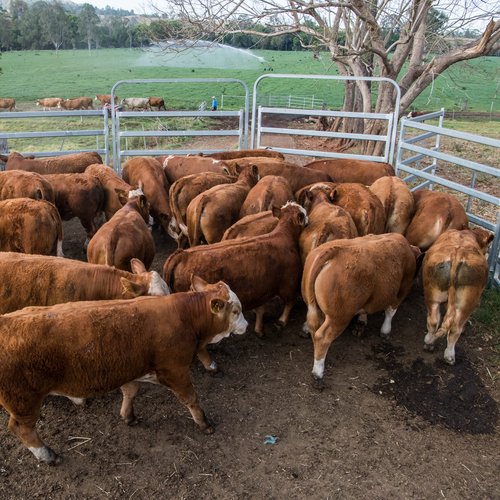“Brilliant” sums up the new Murray Barbless Safe-Twist wire.
That glowing description may reference the glints of sunlight which flash off the twists or reflect an ingeniously simple tool for Australian farmers to keep stock contained and protect wildlife says Matt Stinson, national sales manager at Whites Group.
“Whites Rural’s business researched the fence and wire market and saw a growing expectation in Australia and across other parts of the globe for farming practices, including fences, to be more wildlife friendly.
“Barbless Safe-Twist wire, our new dual purpose barbless barbed wire, is a viable and tested alternative to barbed wire. This provides the opportunity for farmers to make a real difference to endangered species and animal welfare while maintaining the commercial realities of running livestock,” Mr Stinson said.
Composed of two strands of twisted high tensile 1.8mm diameter wire, Murray Barbless Safe-Twist wire is recommended for an alternative top-and-bottom wire fence configuration on traditional four and five barbed wire fences.
The wider, thicker profile reduces the slicing effect of straight wire under pressure and the reflective shine from its twists makes it more highly visible to horses and other animals. It is also ideal as a top lead wire on mesh fences.
A collaboration between Whites’ and the C4 Community and Coastal Cassowary Conservation group helped bring the new wildlife-friendly fence system to fruition.
Over the last two decades, C4 Community and Coastal Cassowary Conservation habitat coordinator Ian Shankly has seen wildlife people come up with fences which have worked wonderfully for wildlife but were less ideal for farmers.
Mr Shankly has been engaged first-hand with the controlled trials and stress testing of fences using the new Murray wire on farm sites near Mariah Creek, Mission Beach. This time has delivered a successful a trifecta for people, cattle, and wildlife.
“We worked with Whites Rural and focused on the needs of fencing contractors and farmers from the outset,” Mr Shankly said. “After six-months, all cattle have been contained with no breakouts, there is no sign of wildlife casualties and no loss of tension in the wire. So, it’s very successful for the farmers.”
The top and bottom wire placement of Murray Barbless Safe-Twist wire is a critical part of the dual solution of stock containment and wildlife movement. Mr Shankly says data from wildlife rescue and animal hospitals show that top wires present the biggest issue for flying animals such as bats and gliders with “around 86% of entanglements occurring on this line.”
On the other hand, the impact of the lower barbed wire is most noticeable during fire, flood, and cyclones. Mr Shankly said this is when fence permeability is essential for the survival of cassowaries, wallabies, wombats, and, to a lesser extent, kangaroos. From a conservation point of view, he said Murray Barbless Safe-Twist wire in a top-and-bottom wire configuration is a “godsend”.
Mr Stinson said the beauty of the Murray Barbless Safe-Twist wire is that it doesn’t cost a fortune and it is simple for everyone. “It is easy to install, no new tools or installation practices are required. Nothing needs to be adapted. And it’s Australian-made.”
He urges farming groups, rural skills training academies, horse associations, and not-for-profit disaster recovery groups such as BlazeAid, to use the new barbless wire and fence configuration to do things differently.
“If there’s fence rebuilding to take place, whether it is as part of normal farming operations or after floods and fire, let’s rebuild with using this top-and-bottom barbless barb format. It’s simple and it works on both sides of the fence so why wouldn’t you?
“We’re excited about it and it’s getting good interest in the market, most recently from Blaze Aid and also farmers.”
One farmer summed it up when he said: “If doing things differently saves the animals, I am all for it. At the same time, I am in the business of farming. My main concern is keeping cows secure so they don’t get out and on the road. That is risk number one. If something doesn’t work for the cattle, I won’t touch it.”




